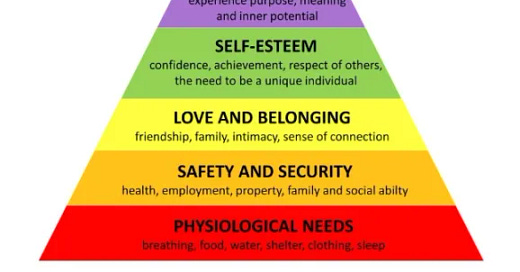This post is something a little different from my typical releases. It is important to remember that in this online world, within the context of this publication, I am an entertainer. When I present information, when I share thoughts and ideas, and when I send these to you, I am trying to GRAB your attention. I use creative writing to add emphasis to the points I’m trying to get across. Nothing I say should be taken so seriously that it is accepted at face value alone. Do your own research. Most folks don’t because the readings are dry and lack the emphasis a Substack post requires to get clicks. Peer review doesn’t rely on limericks and witty phraseology to publish an article. This very important research is an example of that.
A 25-page literature review on MDMA doesn’t hit like a night at the club, does it? A 69-page protocol book on working with PTSD populations might cue up some adolescent giggles about 69ing but do you read the literature and learn about the changes that occur in the amygdala post-treatment?
Yeah, something a little different; good contrast to calibrate our expectations of entertainment and the information we consume. If you care to dig deeper, I have linked my 25-page Literature Review as well as MDMA treatment protocol from the Multidisciplinary Association for Psychedelic Studies.
And to all of you out there in internet land reading this and anything else I put out there, don’t take shit too seriously guys. Take your work seriously, the things you commit to doing in this life. But carry yourselves lightly. After all, how is that the angels flew? They took themselves lightly. Salud.
3,4-Methylenedioxymethamphetamine (MDMA) is a psychoactive chemical most commonly known by its street name "Ecstacy." It is listed both in the state of Indiana as well as within the federal government as a Schedule 1 drug (Drug Scheduling, n.d.). MDMA affects the executive processing region of the brain and more specifically works on the amygdala. This area of the brain controls the brain's "fight, flight, or freeze" response. Interestingly enough this is the area most affected in PTSD populations. Neural connections in the amygdala of patients with PTSD are fewer and the patient's ability to process real-time information is delayed (Deranek, n.d.). This results in the pathological symptoms we see in clients with this diagnosis: dissociative reactions, insomnia, distressing dreams, avoidance, and hyperarousal/hypervigilance (American Psychiatric Association, 2022).
It has been posited by Mithhofer et al and the decades-long research through the Multidisciplinary Association for Psychedelic Studies (MAPS) that therapeutic use of MDMA - in concert with a dual-therapist team - can reduce or eliminate the symptoms of PTSD, effectively placing patients in full remission of symptoms with efficacy rates of 67% (Bartalone, 2021). Treatment is conducted by administering three MDMA sessions spanning over the course of 18 months. Patients are given a dose of MDMA which lasts approximately 4-6 hours. They lie down in a comfortable and safe room and are given sensory deprivation glasses which keep their eyes covered and orient the patient to work inward. Therapeutic treatment is based upon the work of Carl Rogers and his theory of non-directive therapy (Mithoefer, 2015). A male-female co-therapist team works with the patient on anything that comes up during the session. This method of treatment has been highly effective in the treatment of PTSD, more so than that of the current on-label SSRI medications that are used to treat PTSD. These medications also come with a host of symptoms which include depression, suicidal thoughts, and reduced sexual desire.
The advocacy strategy most recommended by MAPS is providing educational literature and training to willing and interested parties which include the public, public officials, regulatory agencies, law enforcement, and the medical and mental health community. MAPS has been working alongside the FDA in their phased trials of MDMA research. Grant funding has been provided to universities to study the use of MDMA. Emory University researchers in Atlanta, Georgia received a $200,000 grant for a pilot study of MDMA in PTSD populations, open to veterans and civilians in the community.
In addition to lobbying efforts, it is recommended that therapists seek out training in this field. It is incumbent upon the mental health community to be properly trained and prepared in advance of possible changes to DEA scheduling. MDMA is currently a Schedule 1 drug, defined by a law-enforcement organization with no medical training, expertise, or background to have "no currently accepted medical use and a high potential for abuse." Decades worth of data including longitudinal studies of sustained remission tell a story that runs counter to the official language of the federal government. Policy change must come from organic opposition to draconian laws from an educated and well-informed public, consisting of experts in the field and the patients who have been treated, not from law-enforcement personnel whose jobs are reliant upon controlling behavior and propagating a dichotomy of good guys versus bad guys that enriches the private prisons, incarcerates more people than any other developed nation, and props up a pharmaceutical industry that has vested interest in keeping the population medicated. Like a sign, my daughter and I saw hanging up at the pharmacy. Yes, it was cute and witty, but its message and belief structure was clear: "If you're happy, it's your meds working." Take your pills, and pay the lady.
Bartalone, C. Medically Supervised Administration of MDMA Can Improve Patient Outcomes in Clinical Therapy: A Review of the Literature (originally published in 2021)
Michael C. Mithoefer, M.D. A Manual for MDMA-Assisted Psychotherapy in the Treatment of Posttraumatic Stress Disorder (2015)


